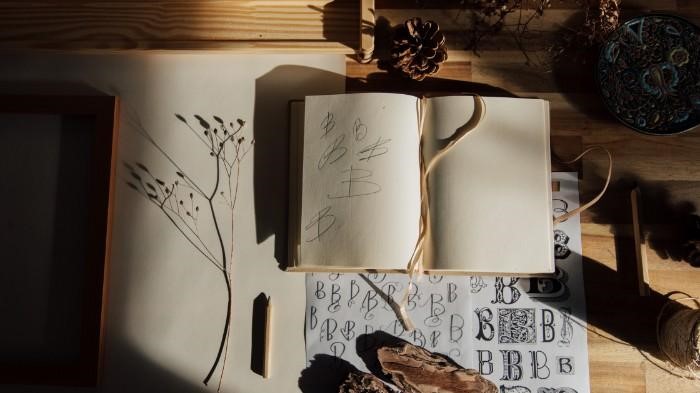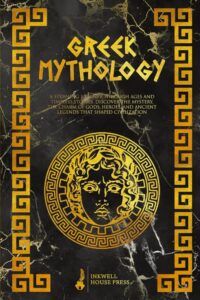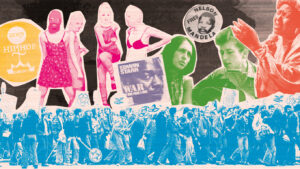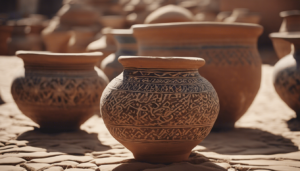Calligraphy encompasses more than mere aesthetics; it represents a complex interplay of history, art, culture, and visual poetry.
From its ancient origins to contemporary interpretations, calligraphy has undergone significant evolution, mirroring the distinct aesthetics and values inherent in various societies, including its impact on typography and visual arts. This examination aims to illuminate the trajectory of calligraphy, including its beginnings, cultural significance, and transformation across diverse regions, such as Chinese, Islamic, Japanese, and Western traditions.
Furthermore, we will analyze the impact of technology on this enduring art form and its contemporary relevance in areas such as therapy, branding, and popular culture, including the rise of digital calligraphy and modern calligraphy.
This exploration seeks to reveal the intricate layers of meaning embedded in each stroke and flourish, emphasizing the techniques and tools involved in different calligraphy traditions.
What is Calligraphy?
.jpg_00.jpeg)
Calligraphy is a highly esteemed art form that encapsulates the beauty of writing systems across diverse cultures. It integrates aesthetic principles, craftsmanship, and historical context to produce visually compelling representations of language.
This decorative writing tradition, also known as letter arts, has evolved over time, shaped by cultural exchanges and artistic movements that underscore the importance of brush strokes, ink, and parchment in the creation of manuscripts and visual narratives.
The practice of calligraphy extends beyond mere penmanship; it serves as a reflection of the cultural identity and heritage of various communities worldwide, thereby constituting an essential component of art history and cultural preservation, while also influencing graphic design and visual communication.
How Did Calligraphy Begin?
The origins of calligraphy can be traced back to ancient civilizations, where the necessity for written language prompted the development of intricate scripts that reflected the cultural nuances of their respective eras, bridging the gap between language and art through expressive writing. From the earliest forms of writing, such as cuneiform and hieroglyphics, to the refined scripts of medieval manuscripts, calligraphy has continuously evolved, adapting to the changing needs and aesthetic preferences of diverse cultures worldwide, showcasing the historical significance and artistic techniques that persist in modern practices.
In ancient Mesopotamia, for example, the emergence of cuneiform on clay tablets not only facilitated record-keeping but also showcased the artistic capabilities of scribes, who meticulously crafted each wedge-shaped mark. Similarly, in ancient Egypt, hieroglyphics transcended mere symbols; they represented a synthesis of art and writing, often embellishing the walls of temples and tombs, thereby reflecting both spiritual beliefs and societal hierarchies.
The significant advancements in script were further propelled during the Islamic Golden Age, during which the development of Arabic calligraphy transformed the written word into a venerated art form, celebrated for its flourished strokes and geometric patterns, serving as a foundation for later art movements and typography design.
This rich history underscores that calligraphy is not merely a means of communication but a cultural artifact, embodying the craftsmanship, dedication, and creativity of those who practiced it across the centuries, as seen in illuminated manuscripts and mural art.
The Evolution of Calligraphy in Different Cultures
The evolution of calligraphy has been characterized by distinct styles and techniques that reflect the cultural significance and artistic expression inherent to various regions worldwide, highlighting the role of calligraphy materials and tools.
From the elegant brush strokes of East Asian calligraphy to the intricate designs of Arabic calligraphy, each cultural approach to this art form exemplifies its unique heritage, traditions, and aesthetic principles.
The ongoing interaction between diverse cultures has resulted in a rich tapestry of calligraphic styles that encapsulate the beauty and complexity of visual communication throughout history, influencing art critique and aesthetic value.
1. Chinese Calligraphy
Chinese calligraphy, referred to as ‘shufa’, is an ancient art form distinguished by its expressive brush strokes and profound cultural significance, influencing both traditional education and contemporary practices. It reflects the philosophical and aesthetic principles deeply rooted in Chinese culture.
This style of calligraphy serves not only as a means of communication but also embodies the artistic expression and cultural identity of its practitioners, with each brush stroke conveying emotion and harmony.
With a history spanning thousands of years, Chinese calligraphy has evolved through various script styles, including the elegant seal script and the fluid cursive script, each presenting unique challenges and artistic techniques, contributing to the development of international styles and visual literacy.
Practitioners utilize traditional tools such as brushes, ink, and rice paper, which are essential for creating works that resonate with cultural heritage, often celebrated in calligraphy exhibitions and public art displays.
The ink, often derived from natural materials, varies in viscosity, allowing for a wide range of textures and tonal variations, while rice paper absorbs ink in captivating ways, enhancing its role in heritage conservation.
This intricate interplay of materials and methods not only highlights the beauty of the characters but also underscores the deep symbolism that connects language, art, and spirituality within Chinese society, reflecting interdisciplinary studies and the semiotics of calligraphy.
2. Islamic Calligraphy
Islamic calligraphy, often referred to as ‘caligraphy,’ is a highly esteemed practice that underscores the beauty of the written word as a form of artistic expression, frequently employed to convey religious texts and messages, and embodying the spiritual and artistic identity of various cultures.
This decorative writing style is distinguished by its intricate designs and ornamental scripts, which reflect the cultural significance of calligraphy within Islamic art, while inspiring innovation and education through workshops and community engagement. It serves as a means to transcend the limitations of visual representation and articulate spirituality.
Since its emergence in the 7th century, this art form has evolved through various historical contexts, shaped by the cultural exchanges that occurred across the expansive Islamic empires.
Essential tools, such as the reed pen, ink, and high-quality paper, have played critical roles in this craft, enabling artisans to produce exquisite manuscripts that often adorned mosques and religious texts.
The symbolism inherent in the calligraphy—such as the representation of divine attributes—enhances its spiritual depth, while architectural ornamentation displays the mastery of calligraphers, transforming sacred spaces into immersive environments of faith and devotion.
3. Japanese Calligraphy
Japanese calligraphy, known as ‘shodo’, is a revered traditional art form that highlights the expressive nature of brush techniques and the aesthetic beauty of characters as visual art, contributing to cultural preservation and visual storytelling. Through a harmonious integration of form and technique, practitioners of shodo create works that resonate profoundly with Japanese culture, illustrating the balance between simplicity and complexity in artistic expression.
Rooted in ancient practices, shodo has evolved over centuries, drawing inspiration from Zen Buddhism and the samurai ethos, both of which emphasize mindfulness and precision. Each stroke carries significant meaning, and the fluidity of the brush conveys emotions and concepts that transcend linguistic barriers, fostering social commentary and international appreciation.
Artists engaged in shodo not only master various script styles, ranging from the graceful fluidity of cursive to the structured elegance of formal scripts, but they also participate in a cultural dialogue that honors community and heritage, encouraging cross-disciplinary approaches and the exploration of modern themes in expressive writing. This artistic community cultivates an appreciation for the subtleties of line, rhythm, and the overall aesthetic development of calligraphy, establishing a timeless connection to tradition while welcoming contemporary interpretations.
4. Western Calligraphy
.jpg_01.jpeg)
Western calligraphy represents a distinguished art form that has transitioned from a practical necessity for clear penmanship to a sophisticated practice celebrating beauty and craftsmanship within the broader context of art history and visual arts education. Spanning from early medieval scripts, such as Gothic script, to the vibrant typography of the Renaissance, Western calligraphy exemplifies the intricate relationship between form, function, and aesthetics, culminating in the development of diverse script styles and techniques, including serif and sans-serif letterforms.
The historical progression of this remarkable art form began with the insular style of the early medieval period, during which monastic scribes diligently transcribed texts by hand, employing quills and ink on parchment, reflecting the historical context and cultural exchange of the time. As time advanced, the influence of the Carolingian Renaissance facilitated the emergence of a more standardized script, which further established the foundation for subsequent styles, promoting innovation and the flourishing of decorative arts.
The enhancements in manuscript illumination during the Gothic period introduced elaborate ornamentation, thereby enriching not only the written word but also the overall visual impact of the page, showcasing the craftsmanship and artistic techniques of calligraphers. By the Renaissance, the advent of movable type signified a notable transformation in the evolution of typography, enabling the broader dissemination of texts while simultaneously inspiring calligraphers to explore new dimensions in their craft, harmonizing traditional techniques with artistic expression and interdisciplinary studies in typography design and graphic arts.
How Has Calligraphy Been Used in Different Cultures?
Calligraphy has fulfilled a multitude of functions across diverse cultures, transcending its status as merely decorative writing to become an essential element of cultural practices, religious texts, and official documents, while also influencing public art, education, and calligraphy competitions.
From intricately designed manuscripts that preserve sacred scriptures to the refined scripts employed in government documents and seals, the importance of calligraphy is rooted in its capacity to convey messages and meanings through visual communication, while simultaneously serving as a medium for language and art integration, art critique, and visual arts education.
1. Religious Texts
Religious texts have frequently been enhanced by exquisite calligraphy, which serves not only as a means of communication but also as a reflection of spiritual beliefs and cultural significance, contributing to the preservation of cultural heritage and the exploration of artistic identity in both traditional and contemporary contexts. The intricate designs and brush techniques used in the creation of these texts often symbolize devotion and reverence, transforming the written word into a visual narrative, while also informing the interdisciplinary studies of semiotics, visual literacy, and creative expression within cultural contexts.
In numerous cultures, including Islamic, Christian, and Buddhist traditions, calligraphy transcends mere decoration. In the Quran, for example, the art of calligraphy embodies the divine nature of the text, with ornate scripts often enriching the reflective experience of readers and viewers.
Similarly, illuminated manuscripts of the Bible display intricate lettering and gold leaf, which symbolize the sacred message contained within. In Buddhist scriptures, graceful strokes and serene compositions convey profound spiritual meanings, inviting meditation and contemplation.
The cultural significance of these practices underscores the universal language of artistry in expressing faith, rendering the written word a powerful tool for both expression and spiritual connection.
2. Government Documents and Official Seals
Calligraphy has played a crucial role in the creation of government documents and official seals, where its decorative writing serves not only to convey authority but also to reflect the cultural heritage and identity of a nation. The meticulous craftsmanship involved in producing these documents highlights the significance of calligraphy as a symbol of authenticity and legitimacy.
From treaties that shape the course of history to legal agreements that govern societal interactions, the art of calligraphy enhances the importance of these texts. Each stroke and flourish stands as a testament to the values and traditions embedded within a culture, evoking a sense of pride and continuity.
In many societies, the practice of penmanship is regarded as an art form that intertwines aesthetic appeal with practical utility.
Consequently, calligraphy not only enhances the visual appeal of formal communications but also reinforces cultural identity, serving as a reminder to future generations of the legacies that these documents embody.
3. Art and Decoration
In the realm of art and decoration, calligraphy represents a unique convergence of language and visual aesthetics, transforming written words into captivating visual art. Through intricate designs and ornamentation, calligraphy enhances various artistic mediums, ranging from paintings to architectural elements, embodying the aesthetic principles that characterize different cultures.
This harmonious fusion not only elevates the visual appeal but also establishes a deeper narrative that encourages viewers to engage with the text and its surrounding context. Historically, calligraphy has played a significant role in movements such as the Arts and Crafts Movement, where craftsmanship and the beauty of handmade texts were celebrated.
The meticulous attention to detail inherent in calligraphic work stands as a testament to the artist’s dedication, facilitating an exploration of themes that extend beyond mere words. This artistry frequently finds applications in contemporary design, inspiring modern visual storytelling that integrates text with visual elements, thereby enriching the viewer’s experience and appreciation of both disciplines.
The Influence of Technology on Calligraphy
The advent of technology has profoundly impacted the practice of calligraphy, facilitating innovations such as digital calligraphy and the creation of specialized calligraphy fonts.
This integration of technology not only broadens the accessibility of calligraphy but also encourages new generations of artists to engage with traditional techniques through modern mediums, effectively merging craftsmanship with contemporary artistic innovation.
1. Digital Calligraphy
.jpg_10.jpeg)
Digital calligraphy represents a contemporary adaptation of traditional calligraphic techniques, leveraging technology to create visually striking art that connects conventional practices with modern design. By utilizing software and digital tools, artists have the opportunity to explore a variety of styles and techniques, thereby enhancing the accessibility and relevance of calligraphy in today’s design landscape.
This integration of artistry and technology opens numerous possibilities for both emerging and established artists, allowing them to refine their visual literacy skills while adhering to fundamental design principles.
Software programs such as Adobe Illustrator and Procreate provide users with an extensive selection of brushes and customizable settings, thereby enhancing the creative process and reducing the time needed to master intricate designs.
However, the transition to digital tools also introduces certain challenges; some artists may struggle to replicate the organic feel of traditional ink on paper. Nevertheless, the educational benefits of these digital platforms are significant, as they nurture a new generation of calligraphers who effectively blend classic techniques with innovative digital methodologies.
2. Calligraphy Fonts
The development of calligraphy fonts has introduced new possibilities for typography, enabling designers to incorporate the elegance and artistry of calligraphy into various forms of visual communication. These fonts draw inspiration from traditional styles while integrating modern design principles, resulting in a fusion that enhances both readability and aesthetic appeal.
Historically, these fonts are rooted in artistic movements such as the Renaissance and Art Nouveau, yet they have evolved to meet the contemporary demands of branding and advertising. In the digital era, the versatility of calligraphy fonts has rendered them essential tools for brands aiming to convey a distinctive identity and emotional resonance.
Whether utilized in sophisticated logo designs or engaging social media graphics, the integration of calligraphy provides a personal touch that fosters a deeper connection with audiences. As designers continue to investigate the relationship between typography, visual aesthetics, and effective communication, calligraphy fonts remain a powerful medium that bridges tradition and innovation.
The Modern Day Significance of Calligraphy
In the contemporary landscape, calligraphy has evolved beyond its traditional roots to attain new significance across various applications, including art therapy, advertising, and pop culture, thereby demonstrating its versatility as a modern artistic expression.
As a therapeutic practice, calligraphy enables individuals to engage with their creativity, while in advertising, its aesthetic appeal effectively captures attention and conveys messages with clarity and impact.
1. Calligraphy as a Form of Art Therapy
Calligraphy has emerged as a significant form of art therapy, providing therapeutic benefits that enhance emotional well-being and facilitate creative expression. Engaging in the practice of calligraphy allows individuals to cultivate a sense of calm and mindfulness, transforming the act of writing into a meditative experience.
As individuals immerse themselves in the delicate rhythms of ink flowing across paper, they not only develop a heightened focus but also access a wellspring of creativity that nurtures the soul. This artistic discipline encourages individuals to articulate their thoughts and feelings in a tangible manner, resulting in increased self-awareness and emotional clarity.
Such avenues for creative expression are particularly beneficial for those experiencing stress or anxiety, as they offer a constructive outlet for pent-up emotions. The repetitive motions involved in forming letters can be remarkably soothing, positioning calligraphy as not merely an art form but also a holistic practice that supports mental health and fosters deeper connections to oneself.
2. Calligraphy in Advertising and Branding
Calligraphy holds a significant position in advertising and branding, as its unique aesthetic qualities facilitate impactful visual communication that resonates with audiences. By incorporating calligraphic styles, brands can enhance their identity and storytelling capabilities, thereby establishing a deeper connection with their target market.
This art form not only imparts a personalized touch but also evokes emotions and conveys messages in a visually engaging manner. Prominent brands such as Starbucks and Coca-Cola have effectively utilized custom typography to establish a distinct voice, ensuring that their products are instantly recognizable.
Adhering to effective design principles, including balance, contrast, and readability, is essential for creating calligraphic elements that capture attention and aid in brand recall.
Ultimately, when executed with deliberation, calligraphy can elevate a brand’s narrative and differentiate it within a crowded marketplace, thereby reinforcing its visual identity and fostering consumer loyalty.
3. Calligraphy in Pop Culture
In recent years, calligraphy has secured its place within popular culture, significantly influencing contemporary art and visual storytelling through a distinctive blend of tradition and modernity. Calligraphers are increasingly showcased in social media platforms, art exhibitions, and commercial projects, demonstrating the evolving nature and appreciation of this timeless art form.
This resurgence reflects not only a fascination with the aesthetic appeal of handcrafted lettering but also a broader shift towards valuing personal expression in an era dominated by digital media. Artists inspired by calligraphy frequently infuse their work with a narrative quality, effectively bridging the gap between historical techniques and innovative practices.
Consequently, collaborations between traditional calligraphers and modern designers are becoming more prevalent, fostering a vibrant community of enthusiasts who celebrate this artistic influence.
Additionally, the growing availability of workshops and online tutorials contributes to a collective learning experience, underscoring the importance of connection and cultural exchange within the contemporary calligraphy scene. These platforms provide education on various techniques, tools, and styles, fostering an appreciation for calligraphy as both an art form and a means of cultural preservation.
Frequently Asked Questions
.jpg_11.jpeg)
What is calligraphy and how has it evolved across cultures?
Calligraphy is the art of decorative handwriting or lettering, serving as a crucial art form. It has evolved and been practiced in various cultures around the world, including East Asia, the Middle East, and Europe, each contributing unique styles and techniques.
When did calligraphy first appear and where?
The earliest known examples of calligraphy, an ancient script, can be traced back to ancient China, around 4000 BCE, where it was used for religious and administrative purposes, showcasing its historical significance and cultural heritage.
How did calligraphy spread to other cultures?
Calligraphy was spread through trade and cultural exchange, as well as through religious and political influences. It was highly valued and adopted by various cultures as a form of artistic expression, communication, and identity, reflecting the symbolism and tradition inherent in different script styles.
What are some notable examples of calligraphy in different cultures?
In East Asia, East Asian calligraphy is highly regarded and practiced in countries such as China, Japan, and Korea. In the Middle East, Arabic calligraphy is seen in Arabic and Islamic art, while in Europe, Western calligraphy is found in medieval manuscripts and as a form of fine art, contributing to the rich tapestry of decorative arts globally.
How has technology impacted the evolution of calligraphy?
With the advent of modern technology, calligraphy has transformed from a traditional art form to a digital one. Various software and tools now allow for digital calligraphy to be created and edited, making it more accessible to a wider audience while blending traditional penmanship with modern typography design.
What role does calligraphy play in different cultures today?
Calligraphy continues to play an important role in various cultures, serving as a form of artistic expression, communication, and even a way to preserve cultural heritage. It is also still widely used in religious and ceremonial contexts, reflecting its aesthetic value and historical context as a medium of visual communication and cultural significance.

My name is Bruno, I have been a writer for 5 years and I work with website creation. My goal is to provide true information to readers. In fact, on this site I write about cultures and traditions, which I have been passionate about since childhood.




